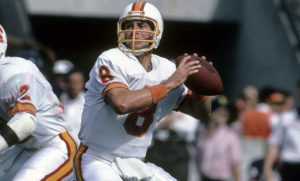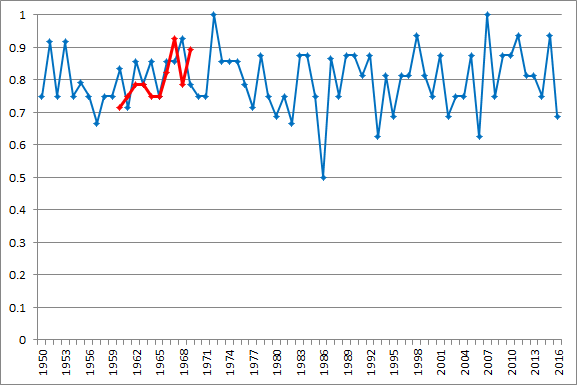They’re not very good.
You’ve undoubtedly heard that only one team in NFL history has started a season 0-4 and made the playoffs. That team was the 1992 San Diego Chargers, who shocked the world by going 6-10 in 1990, 4-12 in 1991, and then making the playoffs in 1992 after an 0-4 start.
But as Jason Lisk has pointed out before, many stories about 0-X teams missing the playoffs ignore the fact that 0-X teams usually are not very good. There are four 0-4 teams in the NFL right now: the two worst teams in the NFL by record last year, the Browns and 49ers, and two pretty good teams from last year, the Giants and Chargers. If New York or Los Angeles was to make the playoffs this year, it would be pretty remarkable. But probably not as remarkable as you might think.
Prior to 2017, there were 113 teams that began a season 0-4 in the 16 game era, which might make you think there’s only about a 1% chance of making the playoffs from this far behind. Indeed, of that group, the ’92 Chargers won 11 games, no team won 10 games, and the 2004 Bills were the only team to win 9 games.
But what would the Giants or Chargers need to do to make the playoffs? Probably win 10 games: i.e., finish 10-2 in their final 12 games. How rare is that? Prior to 2017, there have been 1,116 team seasons during the 16-game era. And 80 of those teams went 10-2 or better in their final 12 games (including the ’03 and ’07 Patriots, and ’04 Steelers, who went 12-0). In other words, about 7% of NFL teams finish 10-2 in their last 12 games. Which is a lot higher than one percent.
So the real question when discussing the Chargers and Giants isn’t how likely is an 0-4 team to make the playoffs, but how likely as the Chargers and Giants to play like a top 7% team the rest of the season.







